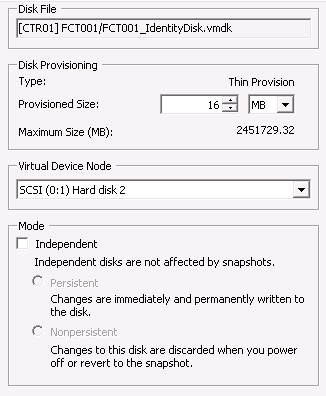Citrix XenDesktop 7.11; digesting full clones
 Citrix recently revealed the newest version of their flagship: XenDesktop (or XenApp or XenApp/XenDesktop, I guess you get the point). One of the newest features that was included in the 7.11 release of XenDesktop is the option to use XenDesktop’s built-in deployment method Machine Creation Services to deploy full clone. Full clones, if your employer delivers a blazing fast storage platform perfectly suited for desktop virtualization it kind of catches your eye…
Citrix recently revealed the newest version of their flagship: XenDesktop (or XenApp or XenApp/XenDesktop, I guess you get the point). One of the newest features that was included in the 7.11 release of XenDesktop is the option to use XenDesktop’s built-in deployment method Machine Creation Services to deploy full clone. Full clones, if your employer delivers a blazing fast storage platform perfectly suited for desktop virtualization it kind of catches your eye…
Let’s start off with the why, IMHO Citrix’ weaker spot with MCS has been DR and backup because of the way MCS lays out the disks used for a VM to run and the way MCS handles this in its infrastructure. By turning the persistent option in MCS over to full clones this whole mechanism gets simplified and basically it now is ‘just another VM’ which means you can use storage replication to make sure the data of the VM is available in multiple datacenters/locations. Next to DR the older MCS mechanisms were hard to back up and storage migrations would get complicated.
With the introduction of full clones VMs are easier to backup, VMs can be storage migrated and, as said, DR situations for persistent VMs are easy. Potential downsides? If your infrastructure can’t utilize VAAI/ODX you might run into long deployment times and without proper data efficiency technologies, you’ll be using more storage. Luckily Nutanix can offer:
- ODX for Hyper-V
- VAAI for vSphere (Did you know Nutanix is the only HCI solution that is certified for the 4 VAAI primitives? #justsaying ;-))
Next to the storage offloading Nutanix offers the proper data efficiency technologies like:
You can read all about these technologies and how they work on the Nutanix Bible (written and maintained by Steven P). Looking at this blog from Michael Webster we’re seeing pretty decent results when using full clones for your VDI environment.
Obviously I wanted to test the inner working of this new option so I installed XD7.11 in my lab environment and deployed a full clone machine catalog and a non-persistent machine catalog in my environment and made some screenshots to compare:
| Persistent Machine Catalog (Full clones) | Non-persistent Machine Catalog |
As we can see here the primary disk of the non-persistent machine catalog VM is marked as non-persistent while the primary disk of the persistent machine catalog VM is persistent. It will be interesting to see the adoption of this feature as I’ve heard a lot of customers ask for an easy to use DR/Backup scenario and this might just be the answer to those questions.
Kees Baggerman
Latest posts by Kees Baggerman (see all)
- Nutanix AHV and Citrix MCS: Adding a persistent disk via Powershell – v2 - November 19, 2019
- Recovering a Protection Domain snapshot to a VM - September 13, 2019
- Checking power settings on VMs using powershell - September 11, 2019
- Updated: VM Reporting Script for Nutanix with Powershell - July 3, 2019
- Updated (again!): VM Reporting Script for Nutanix AHV/vSphere with Powershell - June 17, 2019








1 comment